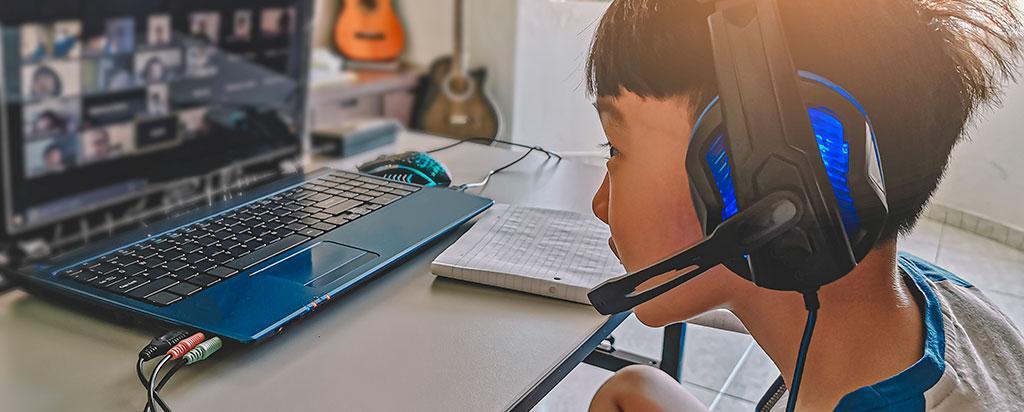If you google the word “school” and look through the pictures, they’ll tell us much about modern class settings. For example, such elements as chalkboards and textbooks were replaced by interactive learning gadgets in most schools worldwide to inroduce fun college classes and engage more students. The philosophy of a “smart classroom” became widely accepted. And today, it’s quite common to see hi-tech devices throughout the school. Technology and learning go hand-in-hand now.
Today, technological progress influences education and pushes the boundaries capturing more educational establishments by integrating technology into the classroom. Teachers don’t have to deal with handling lateness in class as often as they used to because studying has become more interactive and fun. And the use of gadgets during class hours is not a novelty when it comes to technology and education.
Now, teachers share our assignment writing service through Google Drive and upload lectures to Google Classroom using technology. And finding students googling quick answers or searching videos on YouTube to learn complex material is a usual part of classes.
But does technology in the classroom bring any good for learning? Does it help students understand the similarities essays articles better? Why do some teachers and parents support banning digital devices while studying?
Going forward, the topic of the use of technology in the classroom is quite controversial. But reading the facts and pros & cons of phones in school provided below will help you to form an opinion.
What Technological Development Has Presented to Us: Types of Gadgets
What are the devices people imagine when hearing the word “gadget”? Just some of the most popular — smartphones, laptops, tabs, or any other devices used in the class room.
At the same time, they’re the basic teaching and learning tools. Using technology in classrooms, students and teachers create, keep, and share:
- PowerPoint presentations
- PDFs
- Images
- Videos
- Tests
- Articles
- Worksheets
- Homework assignments
- Diagrams
- Useful literature & sources
Also, gadgets serve as communication platforms. If you wonder why phones should be allowed in school, let us just list some convenient apps and services for such purposes in addition to phone usage in school — Zoom, Skype, Google Hangouts, etc.
And, of course, one of the biggest pros of having phones in school is that gadgets allow people to access the Internet — the greatest source of information.
However, the technological possibilities in schools are not limited to a cell phone in schools the gadgets we mentioned above. There’s an abundance of them — of all types, sizes, and demands. For example, modern students and teachers also use technology in the classrooms:
- Bluetooth speakers
- Projectors
- VR headset
- Robots
- Whiteboards
- E-Readers
- Headphones
- Smartwatches
- 3D Printers
- Smart Tables
- Digital Papers
- Holograms
- The 3Doodlers, etc.

Source:
Why We Can’t Learn Without Gadgets Anymore
The COVID-19 pandemic triggered a real revolution in education. Nowadays, teleconferencing, online lectures, the learning of materials from gadgets, online tests, and even online exams and graduations are everyday activities. Although there are both pros and cons of cell phones, uses of phones become inevitable.
Schools and university administrations set up accounts on online platforms to offer courses, hold videoconferences, organize curricula, and create engaging educational communities.
In 2019, we couldn’t even imagine we will experience such drastic changes the learning in 2020.
According to UNESCO, more than 1 billion students globally were affected by school closures. Remote learning became the main mode not only for those who practiced homeschooling. That is why the pros and cons of phones become a much-discussed topic here and there.

Source: https://www.envisionexperience.com/blog/5-tech-gadgets-and-gear-to-make-remote-learning-easier
And after the pandemic, the educational process will never be the same. It will inherit e-learning flexibility. Although the classes are unlikely to take place over online educational platforms completely, the current learning mode will be implemented, continued, and advanced on a large scale. And that will comprise both cell phones pros and cons as the system gets modified.
This way, future hybrid education will keep some methods and achievements of distance learning and reinforce the active use of gadgets. The current schooling is impossible without gadgets, so they will always be a significant part of the process. It is irreversible.
But does it contribute to learning? Should gadgets be allowed during class hours further? Are there benefits of using cellphones? Or, perhaps, it’s all about the cons of cell phones?
Let’s figure it out!
Using Gadgets During Classes: 7 Downsides
The statement that the extensive usage of gadgets brings only benefits is not quite correct. There are some significant cons of phones and other digital devices. As for the cons and pros of gadgets, they can affect children’s physical and mental health, academic performance, socialization process, and safety.
All of them lead to the conclusion that gadgets’ implementation must be limited and focused on the primary purpose.
So, what are the downsides of gadget use? What are the reasons using phones in school should be banned?
Socialization Problems
It’s obvious that using cell phones in the classroom, frequent chatting, playing video games, and interacting with smartphones in general lead to the lack of face-to-face social interaction. When everything is done through a gadget, students limit communication with classmates in real life. Social interaction between them is reduced to class hours—and this ties into the ongoing debate over cell phone usage in school, as educators and policymakers weigh the balance between digital tools and interpersonal learning.
Unfortunately, it’s a fact. For the modern generation, asking Google how to write a Literature essay is easier than asking their peers. With the use of cellphones in schools, today’s students have become extremely dependent on gadgets.
And if students interact with peers, it’s preferable for them to do it via messengers. Now, students prefer to make friends on Facebook rather than in real life. They even start virtual dates in addition to using technology in the classroom.
As a result, students have become more involved with gadgets and virtual communication with phones allowed in school. One of the cons of techs is that they may have a long-term impact on all aspects of their future life: college admissions, employment, building relationships, traveling, etc.
Addiction
Whether it’s using technology in the elementary classroom or college, students are addicted to social media. Facebook, Instagram, Snapchat, TikTok, and Likee are standard elements of the popular apps pack. And all these uses of technology to like photos or find proper emojis for comment during classes is a common problem.
Moreover, using smartphones in the classroom, many students rely on technology so much that they get out of control when using their phones and become easily irritable or even aggressive when they can’t or are not allowed to use gadgets. Should cellphones be allowed in schools in that case? Definitely not.
Distraction

Source: https://bsmknighterrant.org/2018/03/16/many-distractions-affect-students-on-a-daily-basis/
As for the most common cons of cell phones in school, it is obvious that students easily get distracted by the use of mobile phone when:
- Playing video games
- Messaging
- Scrolling photos
- Making photos
- Watching videos…
When they do it instead of learning CS essay recommendations or other issues and focusing on lectures, that doesn’t contribute to the studying process. With cell phones at school, children miss vital information. Then, for many of them, it’s hard to catch up with the class.
Will that enhance their academic performance? Should cellphones be allowed in school? Surely, no. That’s why the teachers who support the anti-gadgets and no cellphones in school movement say that distraction is a №1 reason for banning gadgets during class hours.
So, it’s evident that kids should be allowed to use cell phones or other gadgets in class only for academic purposes since education and technology aren’t the best combination sometimes.
Cybersecurity Issues
Typically, students don’t care about safety and security or AI writing and plagiarism when they surf the web, use of technology in classrooms, and install apps and other software on their phones and tablets. It is a serious problem because information leakage can make them victims of cyberattacks or fraud.
Also, kids can get access to information that can have a negative impact on their mental health, whether in a class or at home. That’s why it’s critical to discuss the basics of appropriate online behavior and safe communication, as well as consider all pros and cons of phones in schools.
Lack of Tech Support
The use of electronics in school needs solid support. And not every school can afford prompt and professional maintenance of electronic equipment.
Let’s imagine a quite real situation when a teacher plans a lesson completely relying on devices. And for some reason, everything goes wrong with them. They just won’t work.
The same applies to students’ personal use of technology in classroom for learning purposes. The “It doesn’t work” issue can happen to anyone. And it can be a great obstacle to the education process. Should cellphones be allowed at school? This point raises a range of doubts.
Inequality and Discrimination
Yes, gadgets can lead to discrimination between students. Some of them have the newest and costlier ones, while others — settle for less.
When phones in the classroom are allowed, many children from the first group tend to boast about it, pay more attention to smartphone functions than classes, and show off.
Besides, those who can’t afford the recently upgraded, more powerful devices may not have equal and adequate possibilities for studying. Thus, no cell phones in class don’t sound like a bad idea.
Health Issues
It’s well-known that overuse of gadgets encourages a sedentary lifestyle and causes serious health problems. Unregulated uses of cellphone tend to cause:
- Neck and back pain
- Obesity
- Poor posture
- Eyestrain
- Stress
- Musculoskeletal disorders
- Weight gain and obesity
- Hand pain
- Sleep disorders, etc.
This list of cons of having phones in school is far from being exhaustive. So, should phones be allowed in school? The list above really makes you think.

Source: https://www.allaboutvision.com/cvs/irritated.htm
Is Everything That Bad? No!
While there are many negative aspects of gadget usage during class hours, actually, the benefits of technology in classroom are enormous! Let’s name the most prominent advantages of cell phones.
Firstly, cell phones in schools are invaluable helpers for special-needs students. One of the pros of cell phones is that such assistive technology is vital for people to learn, socialize, improve skills, communicate, and enjoy life.
Secondly, technology in the classroom benefits the educational process because devices promote studying by engaging learners. Often, kids can learn even the most complex concepts, such as the evolution of essays and challenging subjects through gamification. Despite all the cons of cellphones in school, gadgets are all about interaction. And it’s up to a teacher to decide how to develop, organize, and present information in the most useful and fun way.
Thirdly, the learning experience itself became faster and more effective. Why should phones be allowed in school? Because now, we can now process, save, and transmit a larger amount of information. In fact, we have access to practically all data sources in the world. Besides, there are countless other pros of cellphones in school, like new learning methods, apps, services, and add-ons to make education exciting and tailored to any person’s demands. Not to mention that there are limitless possibilities to create and apply the best learning practices with phones in class.
Other advantages of cell phone schools include:
- Personalization
- Possibility to explore the world outside the class
- Improved teaching
- Fast communication between students and professors
- Continuous and systematic studying
- Eco-friendly approach
- Cost-saving
- Enhanced collaboration

Source:
So, Should Gadgets Be Allowed During Class Hours?
Definitely, yes!
Although the opponents of cell phones in school have a point, it’s now impossible to get back to the past and cut ourselves off from the available possibilities and not use of technology in classroom. Cell phones should be allowed in schools since technology is an essential part of education. Taking into account all the pros of phones in school, it’s not the best decision to completely ban gadgets in class or at home.
As you can see, there are pros and cons of cell phones in school. To make the most of the gadgets, we should consider all the pros and cons, learn how to use them for learning, and take care of safety and proper behavior. Considering both the pros and cons of cell phone usage, the best way to prevent negative consequences is to apply them only for educational purposes during class hours. Similarly, when examining sensitive topics like media content, it is important to weigh the arguments for censoring pornography to understand different perspectives and develop balanced conclusions.




